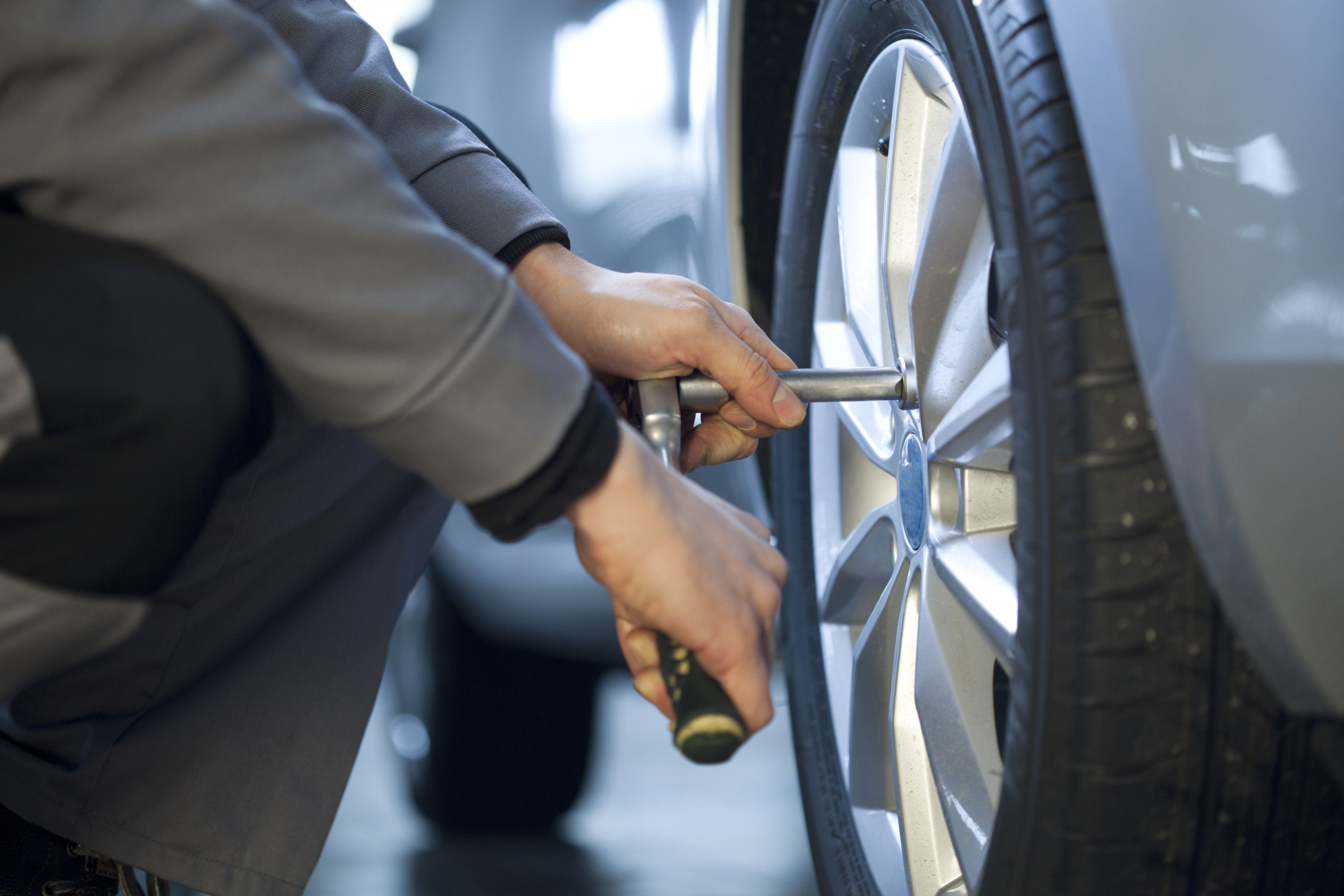
We’ve all been there before: You’re driving down the road when you begin to hear, and feel, the rhythmic thumping sound of a flat tire. Or, you walk out to your car to leave for work, only to find that you’re not going anywhere on that tire. There seems to be some natural law dictating that flat tires happen at the most inconvenient times. You can save yourself some time and money if you can skip the service call and change your tire yourself. It’s easy and safe when you follow the right steps.
Step 1- Get to a Safe Place: If your flat tire occurs while you’re driving, it can create a dangerous situation, especially if you’re traveling at highway speeds. When a blowout occurs, it can cause your car to pull in the direction of the flat, and overcorrecting can cause a loss of control.
The most important thing to do if you have a blowout while driving is to stay calm, and avoid slamming on the breaks or jerking the steering wheel to try and correct. Instead, continue giving the car gas, easing off slowly as you gently steer the car to the side of the road. Slow down, and find a safe place to pull over and fix your tire. A parking lot is best, but the shoulder will do in a pinch. Turn on your hazards, and you’re ready to get to work
Step 2- Gathering Supplies: In order to change your own tire, you’re going to need a tire iron, a jack, and a spare tire. These items come with basically all modern vehicles, and can be found in a compartment in the truck, or bolted up under the vehicle. It’s best to locate these items whenever you get a new car, and be sure you know how to get them loosened and ready to use. Keep them in good repair so they’re ready to use when you need them.
Step 3- Loosen the Lug Nuts: Once you jack your car up, the tire will spin freely, making loosening the lug nuts difficult. Loosen them while the tire is still on the ground to give you some leverage. The lug nuts will be tight, so you’ll need to use the tire iron and your body weight to get them going. Place the tire iron over the lug nut, and then stand on the end with one foot, using your body weight to push down on the end. Repeat until all the lug nuts are loose enough for you to turn with your fingers, but don’t take them off yet.
Step 4- Using the Jack: Most cars come with a small diamond jack as part of the factory tire changing kit. This jack usually fits into a slot in the frame of the car right behind the tire. Inserting the tire iron into a “key hole” on the side of the jack and turning it will raise the jack and lift your tire off the ground. You need to give yourself a few inches of clearance, since your new tire will need more space to fit into than the old, flat one did. Once the tire is off, you can remove the lug nuts, and pull the flat tire off.
Step 5- Putting the New Tire On: If you’re using a factory spare, it’s probably a smaller version of your normal tires. These “donut” tires are only meant to be used temporarily, and at lower speeds. Slide the spare onto the wheel, and spin the lug nuts on with your fingers. Don’t tighten the lug nuts any further until you’ve lowered the jack. Once the vehicle is lowered, you can tighten the lug nuts in a star pattern. This cross tightening ensures that the tire goes on evenly. When you’re finished, clean up all your supplies, and you’re on your way. Be sure to have your tire repaired or a new one put on as soon as possible, since the factory spare is not meant to be driven long term.
Related Posts
Key Takeaways On average, passenger vehicle tires last 40,000 to 60,000 miles, depending on type, driving habits, and maintenance. Replace tires when tread depth reaches 2/32”, if damaged, or older than 10 years. Regular rotation, alignment, and proper inflation extend tire life. Aggressive driving, poor roads, and harsh weather shorten tire lifespan. Take advantage [...]
When you think about car maintenance, you probably focus on oil changes, tire rotations, and maybe even brake pad replacement. But what about your brake fluid? If you’ve ever wondered, “What does brake fluid do?” or “Why is brake fluid important?”, you’re not alone. Brake fluid might not be the most talked-about part of [...]
Is that high-pitched squeal from your brakes driving you—and everyone else—crazy? Don’t ignore it. Squeaky brakes aren’t just annoying, they’re your car’s way of saying something needs attention. Whether you're cruising through Salt Lake City or winding up Idaho’s mountain passes, here’s what’s likely going on, how you can fix it, and when it [...]





